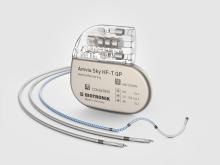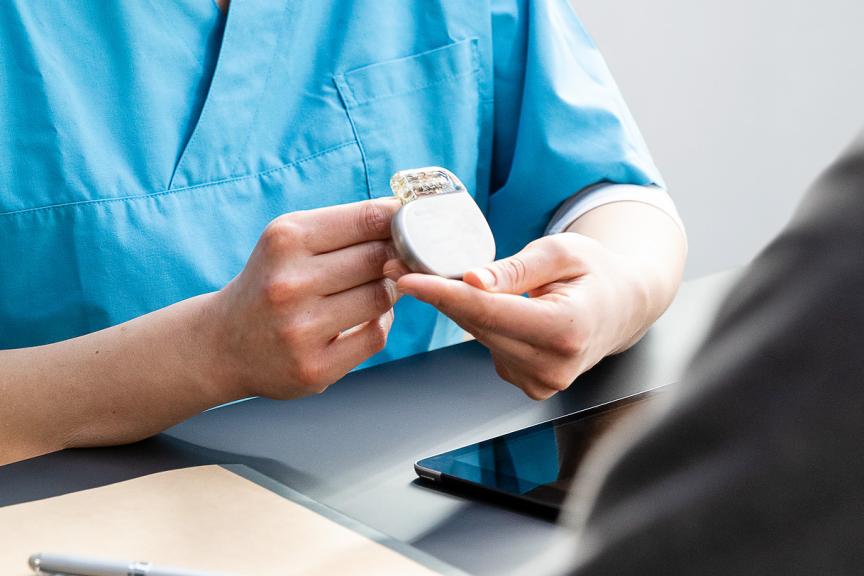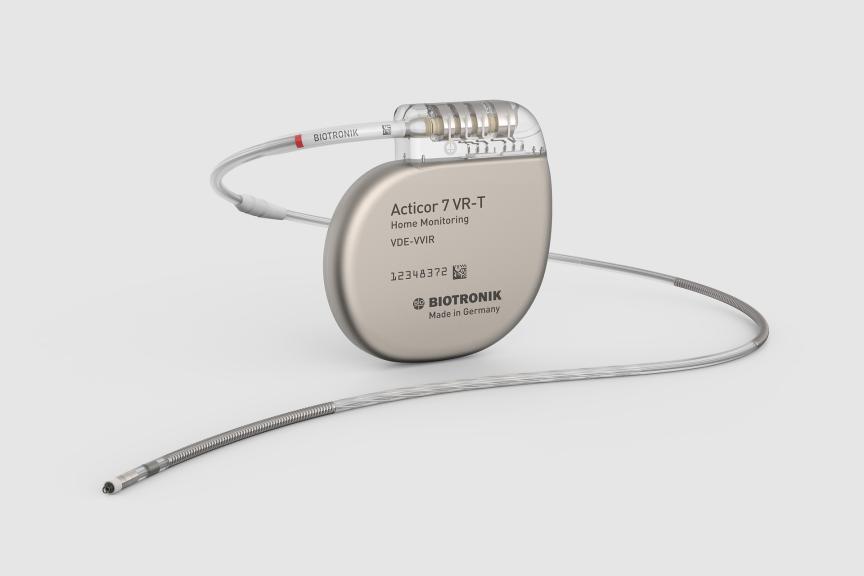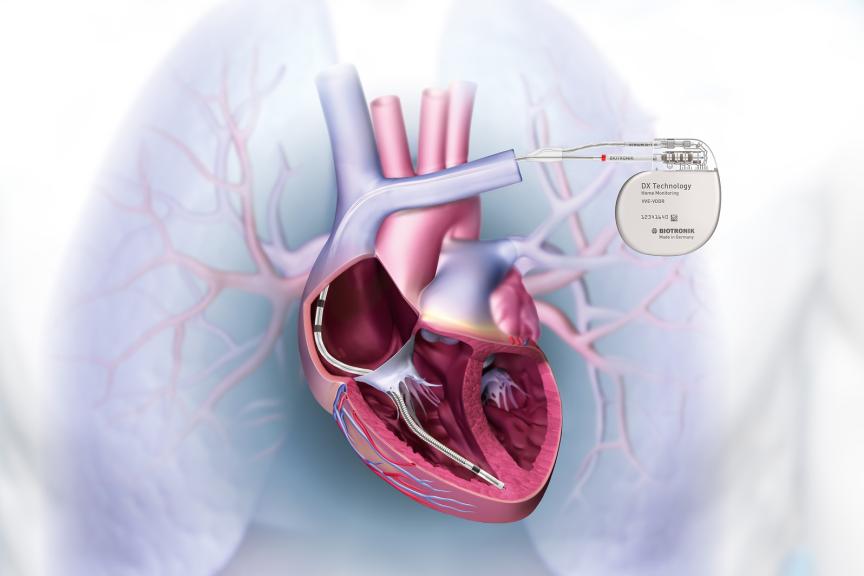What Is an Implantable Defibrillator?
Defibrillators or rather Implantable Cardioverter Defibrillators (also called ICDs) are electronic devices that can save the lives of patients who are at risk of having a very fast heartbeat (over 100 beats per minute). This is called ventricular tachycardia and happens when the two main chambers (ventricles) of the heart beat too fast (tachycardia) to sufficiently pump blood through the body. This can lead to a life-threatening situation in which the chambers can no longer contract (ventricular fibrillation). This leads to cardiac arrest within minutes. To stop this from happening, an electric shock (defibrillation) must be emitted into the heart to shock it back into a normal rhythm. This is where the ICD comes into play. It detects the extremely fast heartbeat and shocks the heart back into a normal rhythm, saving the patient’s life before cardiac arrest.





